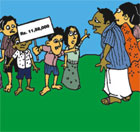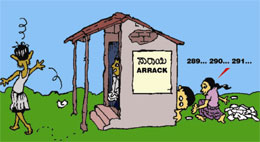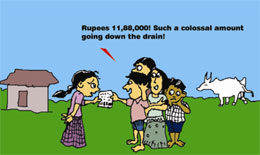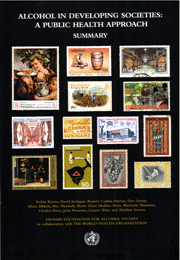
Children as agents of change
Children can make a real difference in their communities. A new manual on rights-based research from Concerned for Working Children (CWC) in Bangalore, India shows how children can be empowered to influence their community and also local alcohol policies.

The child rights organisation Concerned for Working Children has developed a manual based on the experiences with the children from Keradi. CWC now has made their manual available to other NGOs which aim to involve children in documentation and advocacy work.
The manual can be downloaded here.
Here is a two minutes video film presenting the case.
Read more about Concerned for Working Children at their web site here.
“Amazing”

Nandrolli is a small hamlet in Keradi in Udupi Taluk, a remote village located on the Western Ghats in Karnataka, India. It has 75-80 families and a population of 400 to 450.Alcoholism was a way of life and a major issue in this area. Thewomen and children especially suffered on account of alcohol abuse. This created tension and disharmony in the families and in the larger community.
Brushed aside
These children of Keradi, who are members of Makkala Panchayat (a children's organisation), had faced a lot of problems. They started talking to each other and decided that they had to find a solution to this menacing problem. Children had tried to raise this issue with the members of Adult Grama Panchayat (local government) before, but they had been brushed aside saying that it was not really an issue and that there was no need for children to tell adults about it. Faced with such resistance the children concluded that they needed to define a strategy and to equip themselves with facts and information about the real situation in their community.
The question was then: How to find facts that could show the real size of alcohol consumption in the village and which could make adults re-think about the seriousness of the problem. The children decided that under the pretext of a ‘clean the village’ campaign, they would clean the surroundings of the main ‘arrack shop’ in the hamlet. They were sure that this strategy would get them the required information.
Count of arrack sachets

A huge amount

The rest of this inspiring story can be read in the CWC manual “Children as research protagonists! Rights-Based Research by Children”. Together with the full story the reader will find methodological comments all along, comments which make it easer for others to use the same technique in empowering and mobilising children.
![]()
![]()
Developed with CustomPublish CMS by Nettinfo AS




